8 Countries, 21 Days, 1 Private Plane: The Ultimate Travel Bucket List Trip

There are 52 of us travelers. We’re wearing name tags around our necks, and it feels like the first day of summer camp (“So many people to meet!” I hear someone ebulliently exclaim). Except that we’re in the ballroom of Zurich’s Dolder Grand Hotel, we’re holding champagne flutes, and one of our “counselors” has just proclaimed from the podium, “Remember, adventures begin at the edge of your comfort zone. We hope that you have them, and that you go there.”
Adventure and comfort are a heady combo, and this has more to do with the buzz in the room, I’m thinking, than the bubbly. We are at the start of a journey to Africa (Zurich is the kickoff point) organized by a company called TCS World Travel.
It will take us, over 21 days, to eight countries—Ethiopia, the Seychelles, Tanzania, South Africa, Namibia, Botswana, Zambia, and Rwanda—and six UNESCO World Heritage Sites. There are encounters with mountain gorillas on the menu, and hikes near the spray and thunder of Victoria Falls.
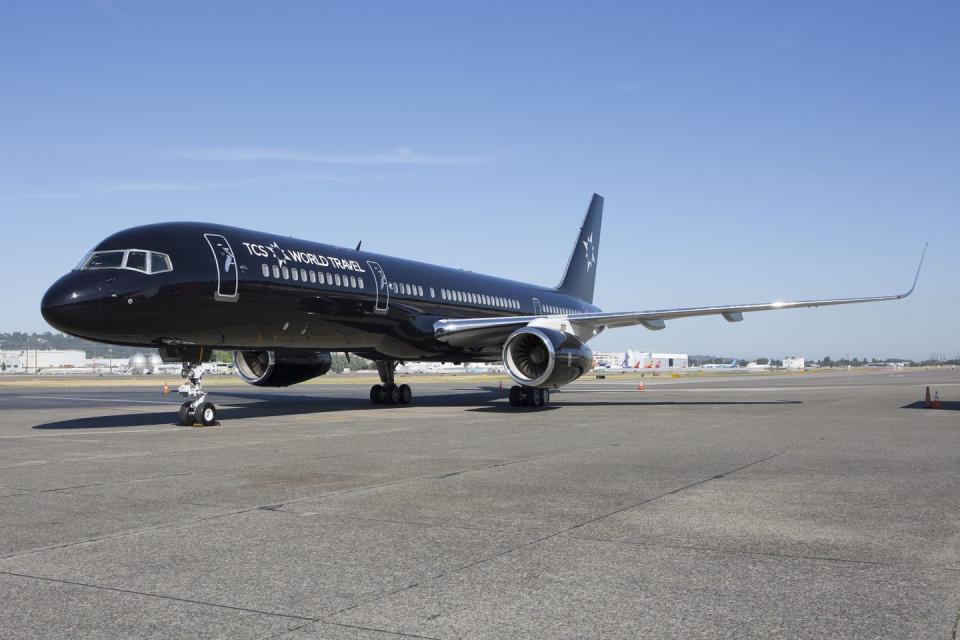
But we are not flying commercial. There will be no landings in the middle of the night (like one 2 a.m. arrival in Kigali I had last year) and no ghastly layovers (like the seven-hour longueur I once endured in Dubai on my way to Indonesia). We have our own chariot: a private Boeing 757 leased and operated by TCS and configured to carry 52 passengers not merely in flatbed comfort but in luxury.
Or so I’ve heard. I’m a first-timer to this sort of travel and, as I’m quickly finding out, a minority here. “After this trip my bucket list will be all spent,” I overhear one woman say. (Then correct herself: “Actually, no—I want to go to Iraq.”) Someone else is enumerating places she visited on a TCS trip some years back: “Iran, Syria, Burma, Urumqi—that’s in China, a former hub on the Silk Road. It was fantastic!”
“Welcome to the TCS family!” Jill Peacock, our expedition leader, exclaims. The “family” includes CEOs, art dealers, bankers, realtors, and lawyers, among others. Most are from the U.S., but there are people in the room from Brazil, Britain, Bulgaria, Canada, Mexico, and Vietnam (by way of Texas).
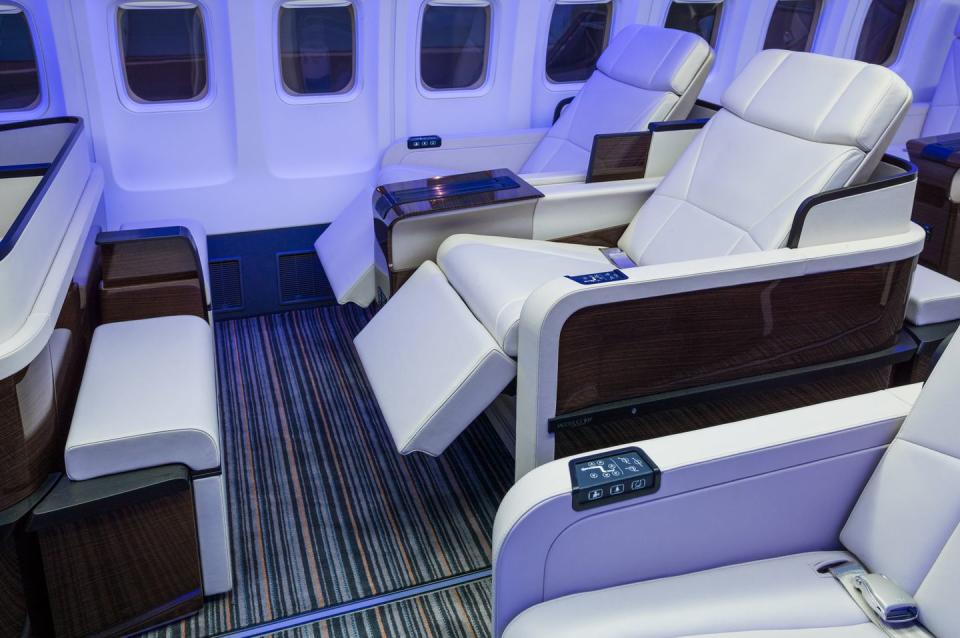
And the number of repeaters, including four- and five-timers (there’s a show of hands) is noteworthy, as TCS’s all-inclusive private jet itineraries range from $72,950 to $134,950 per person, and the one we’re on, called Best of Africa, costs $108,950 (with a solo supplement).
“This kind of travel is like fine wine” is how Nancy Gruhl, of Marblehead, Massachusetts, sums up the allure. “Once you have a taste, you don’t want to go back. I now work just so I can go on trips like this.”
The original jetset—the wealthy and well-tanned flitting between stylish cities and resorts—had fizzled as both a social and travel trend by the 1970s, in the face of the less than beautiful realities of mass tourism. So-called experiential travel was now the thing, and it came with different bragging rights.
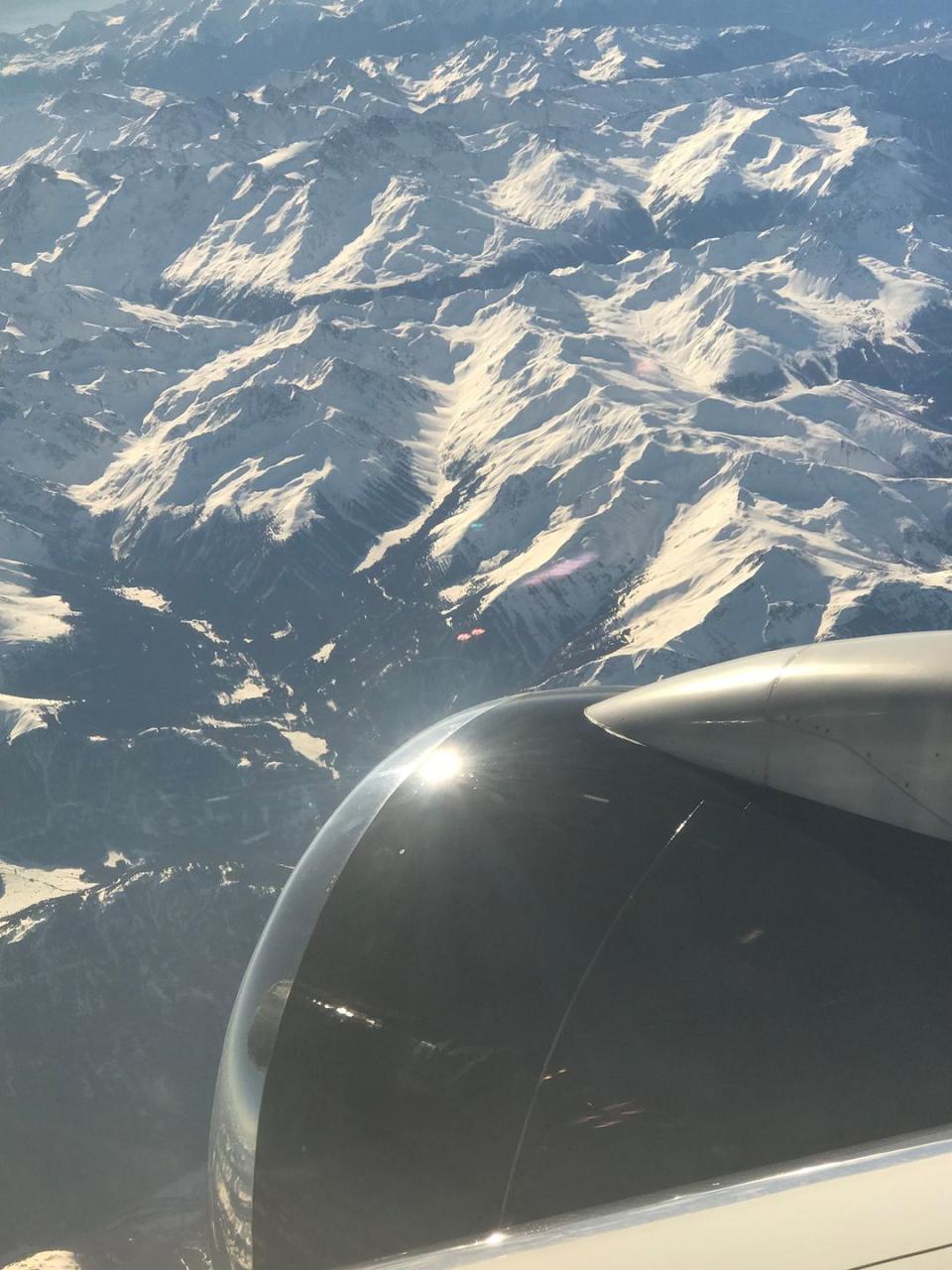
Being able to say “I saw the golden eagles in Mongolia” had more cachet than “I summered in St.-Tropez.” By the ’90s, TCS was transporting travelers on complex expeditions to challenging places—not on planes, at first, but aboard trains bounding across Russia and China, or on icebreakers nosing into the vastness of the Arctic Ocean. Then TCS planned a voyage on a private jet, as an experiment for the American Museum of Natural History, and it sold out instantly. As did the next.
So it was that private jet touring as a way of seeing the world was born, and TCS World Travel became a pioneer of the niche genre. (And niche it is, with no more than a dozen such planes in operation.) The trips are not prosaic runs between points A and B but rather multiweek journeys, the planes touching down at multiple destinations for two- or three-night stays, seamlessly linking (in a way no cruise ship or commercial flight ever could) distant and difficult-to-connect places.
The jaunts are indeed bucket list extravaganzas. You can now visit, in three weeks or so and with concierge and bespoke services thrown in, Cusco and Machu Picchu, Easter Island, Samoa, the Great Barrier Reef, Angkor Wat, Bhutan, the Taj Mahal, the Serengeti, Petra and Wadi Rum, and Marrakech.
That lineup is not the product of a fevered imagination but the actual itinerary of an upcoming trip from TCS. (The company now operates five planes, all of whose carbon emissions it offsets; it has been the white label behind National Geographic’s private jet voyages since 2001 and of the Four Seasons’ since 2012.)
I feel as if I’ve snuck into travel’s new secret society: people in pursuit of sublime experiences who can afford to string them together like pearls. I’ll be onboard for one week, though, not three, just enough to give me a sense of the chase and of its flow.
“Please have your large bag inside the door of your room by 10 p.m. for collection by the hotel porters,” reads the Daily Program, a sheet of instructions on my bed. Our carry-ons too are collected, although we bring them down ourselves to the lobby by 7 a.m.
We will see neither piece of luggage until we check into our rooms at the next destination. All we have with us as we set out for the airport are small backpacks provided by TCS to hold essentials. Marie Kondo would approve.
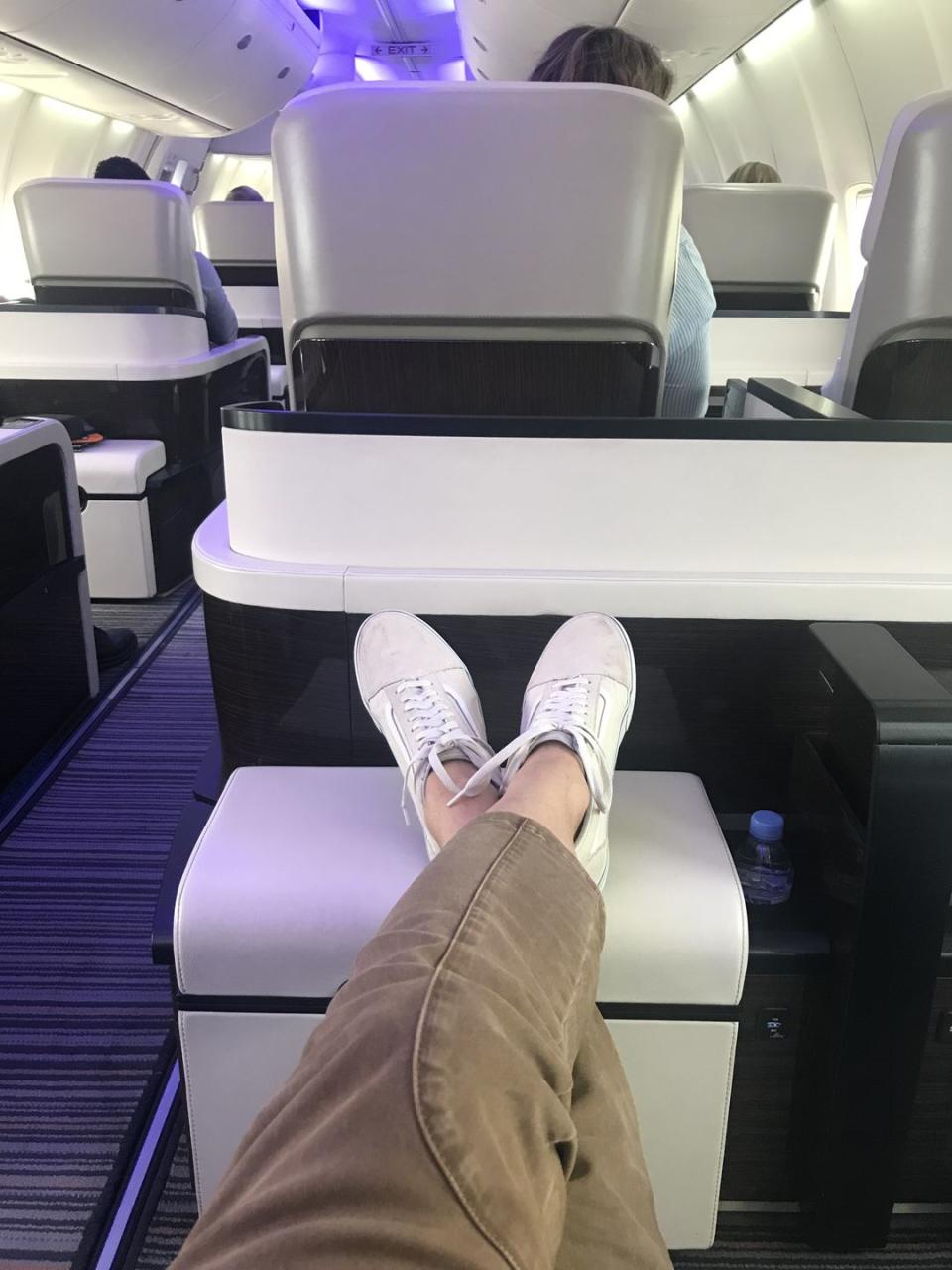
The plane itself is black on the outside and upholstered in cream-colored leather on the inside. My seat is cushy. My feet are up on a matching leather ottoman inside of which I discover a thick white quilt, a large pillow in a crisp white sham, and a fully loaded iPad—movies, music, and more. Tucked inside the overhead bin—uncluttered by bulky carry-ons—is my “cabin bag,” which holds my own set of Bose headphones, a face mask, a black blanket (for when the quilt is de trop, I guess), and various potions, including two tubes of something called “comforting cream.”
I have a rowmate, and we will be sitting together for the duration of my time aboard, our seats assigned the way bunk beds are at camp (the similarities stop there). Her name is Lena, she is from São Paulo, and this is her seventh trip with TCS. (The most recent was a health and fitness–focused swing through Asia led by wellness guru Andrew Weil. “We learned about Eastern therapies, exercised, and meditated.”)
No sooner have we taken off, the snowcapped Alps jagged beneath us, than the captain announces, “We will be flying over Venice, Croatia, Athens, Heraklion, Alexandria, and Luxor. From there we cross into Sudan and fly over Khartoum. Which, as you know, is at the same latitude as Asmara and Sana’a.” (No need to remind this crowd that the former is the capital of Eritrea, the latter of Yemen.) “And then Addis Ababa. Our first stop. We’ll be there in six hours and 15 minutes.”
It’s time for the flight’s first meal service: caviar and condiments. They are of a quality and quantity unmatched on any business or first class commercial flight I’ve ever been on (and I’ve been on many).
Champagne too is flowing. There are some 180 bottles of it onboard, along with 580 of wine and 75 to 100 of various liquors. “And if a wine-producing region is on our itinerary,” Kerry Sear, TCS’s director of food and beverage, will tell me, “we’ll stock up on more. Some people also like to bring their own vintages aboard, either for themselves or to share. We can accommodate that, too.”
Of course they can. Because attending to everything on the plane are a bevy of experts: the captain, two other pilots, an engineer, eight flight attendants, three “expedition staffers,” two lecturers, two chefs, a catering operator, and a doctor—the affable Andrew Ketterer, who will brief us periodically and is on call 24/7. That’s roughly one staff member for every three passengers. The word coddle doesn’t quite cover what they do.
“We have figured out that about 500 people touch each one of our trips,” Jennifer Dubois, the VP of operations, tells me. “Everyone at the head office in Seattle, hotel staffs, the local travel specialists at each destination, the drivers, the guides, the advance team.” All airport arrival and departure procedures are expedited by TCS’s airport crews.
Our customs forms are filled out; all we have to do is sign before landing. We find in our hotel rooms pouches with a small amount of local currency and stamped postcards for old-fashioned travel bragging. No detail is too small.
Frankie Edozien, a Nairobi-born professor of journalism at New York University and one of the lecturers onboard, gives a talk about the biggest deal in Africa: the surging influence of China. “You’ll notice that Addis is a construction site: Chinese-financed developments.” Peacock prepares us for possible power outages at the Sheraton Addis, our home for the next two nights. “It’s the best hotel in town. Dignitaries stay there. But the lights might occasionally blink. Don’t worry—it’s a citywide problem.”

I’m not worried about a thing. As we start our descent, with the sun setting in that dramatic, finger-of-god way over spectacularly barren brown hills, I feel a way I have rarely felt while traveling: totally unencumbered yet cocooned, ready for the moment.
“Pace yourselves,” Peacock advises us, “or we will fill up your every moment with activities.” She is referring to the on-the-ground options, to which the TCS team devotes serious time. “We have people always out and about, sending back ideas from around the world,” Dubois says. “We scout each place two years in advance, then one year in advance, and as soon as we have real people booking, with specific interests, there are more conversations.” These private jet tours are the highest-end group travel possible, but every effort is made to customize them.
At every stop the “family” breaks up according to interests. For our one full day in Ethiopia, I choose Lalibela, the complex of 11 churches carved out of solid rock in the 12th century in the country’s northern highlands; it’s one of the still-secret wonders of the world. A 50-minute commercial flight from Addis—the TCS plane is too big to land at the local airport—gets us to Lalibela, and directly we tromp, at an elevation of 9,000 feet, around a fantastical inverted world, where the roofs of churches align with the ground and the rest—columns, porticoes, windows—are below.
Ethiopian Orthodox priests and worshipers, clad in white robes, lean against the reddish stone holding frayed prayer books and wooden staffs; a shaft of light illuminates a golden cross held high. I pick up the incense-infused scent of 900 years of continuous human devotion. And I feel, as never before, that I have traveled back in time.
“Dinner the first two nights is on your own,” Peacock informs us during our next flight, to the Seychelles, the archipelago nation off the coast of Kenya. “The third night will be a group dinner.” (Perfect—I’m getting into the groove of camaraderie.) As Dr. Ketterer makes his rounds (“Apply bug spray after we land, and it’s time to start taking your Malarone”), I find myself wishing for such ministrations in my real life.

After a few excursions—the islands of La Digue and Praslin (the latter for its Vallée de Mai Nature Reserve)—I decide to pace myself and just luxuriate in the beachy splendor of the private villas of the Banyan Tree Seychelles. Plus, I’m saving myself for Serengeti National Park—at 5,700 square miles, it’s one of the largest protected pieces of land in Africa. It will be our expedition’s third stop, and my last.
Getting there is a relay. We take our plane to Tanzania’s Kilimanjaro International Airport, a bush plane to the Seronera airstrip, and game drive vehicles to the Four Seasons Serengeti. (Half of the group peels off for the Ngorongoro Crater’s &Beyond Lodge, an option at booking.)
We have a briefing over cocktails, and Peacock reminds us of the next morning’s touring options: either two half-day game drives (with a lunch, pool, and spa interlude) or a full-day, eight-hour drive to see the wildebeest migration. “Just let us know by dinner.”
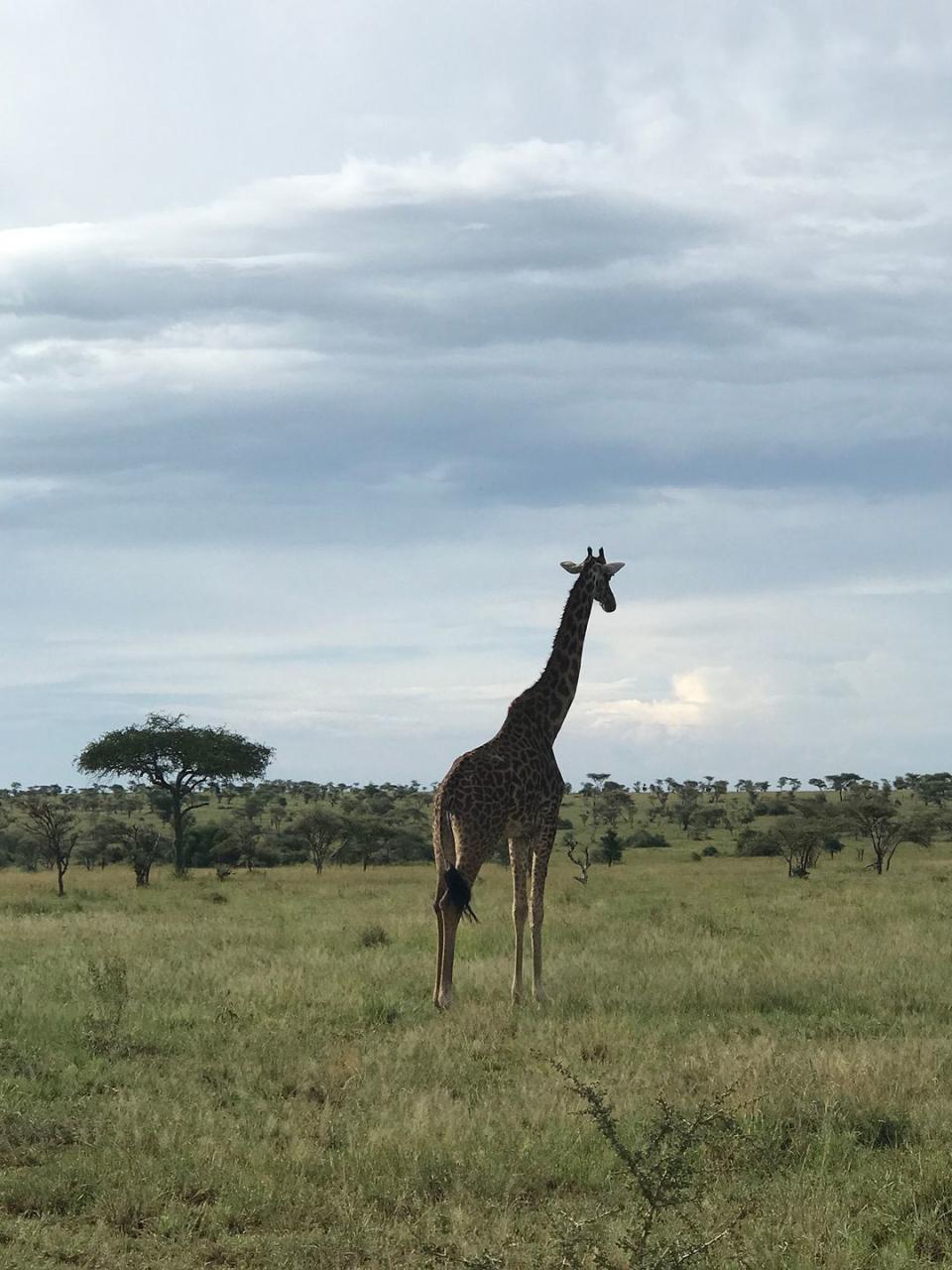
“The migration drives the dynamics of the Serengeti,” says Kris Helgen, the other lecturer on our expedition, who is a professor of biological sciences at the University of Adelaide and former curator of mammology at the Smithsonian. “There are a million of them, moving endlessly, following the rains, and everything responds to them.”
Seeing the migration happens to be one of my dreams, and I’m not alone: A small caravan of four-wheel-drive vehicles sets out in the morning, a few of us in each, plus a driver and a guide riding shotgun. Before long, though, it’s as if the vast plain has swallowed us all, and the Land Cruiser in which I’m riding with Richard Frank, from San Francisco, seems to be the only one out here.
It matters not at all that I don’t know my seatmate well—we’re about to see the greatest wildlife spectacle on earth, and we’re bonding. We spot a family of elephants in the distance, improbably dwarfed by the green immensity. A bird rides the thermals. A lioness stands absolutely still on a roadside mound, unperturbed by our presence, her gaze far off and focused.
“Something has happened here, is happening, will happen—the whole landscape seems alert,” Peter Matthiessen wrote in his book on Africa, The Tree Where Man Was Born, which was on the pretrip reading list. “On the plain, the herd animals were restless, and the [wildebeest], crazy-tailed, fled to the four winds, maddened by life.”

Two hours into our drive, the grass is suddenly dark with wildebeest all the way to the horizon. Long lines of them are moving parallel to the dirt track, as well as crisscrossing it, many with newborn calves alongside them. Now and then there are bursts of wild galloping. Lions lie nonchalantly in the bushes, bellies visibly full already, but with yellow eyes coolly assessing the buffet before them nonetheless. And the herds haven’t even reached the most dangerous part of their circular journey. (That will happen when they cross the crocodile-infested Grumeti and Mara rivers.)
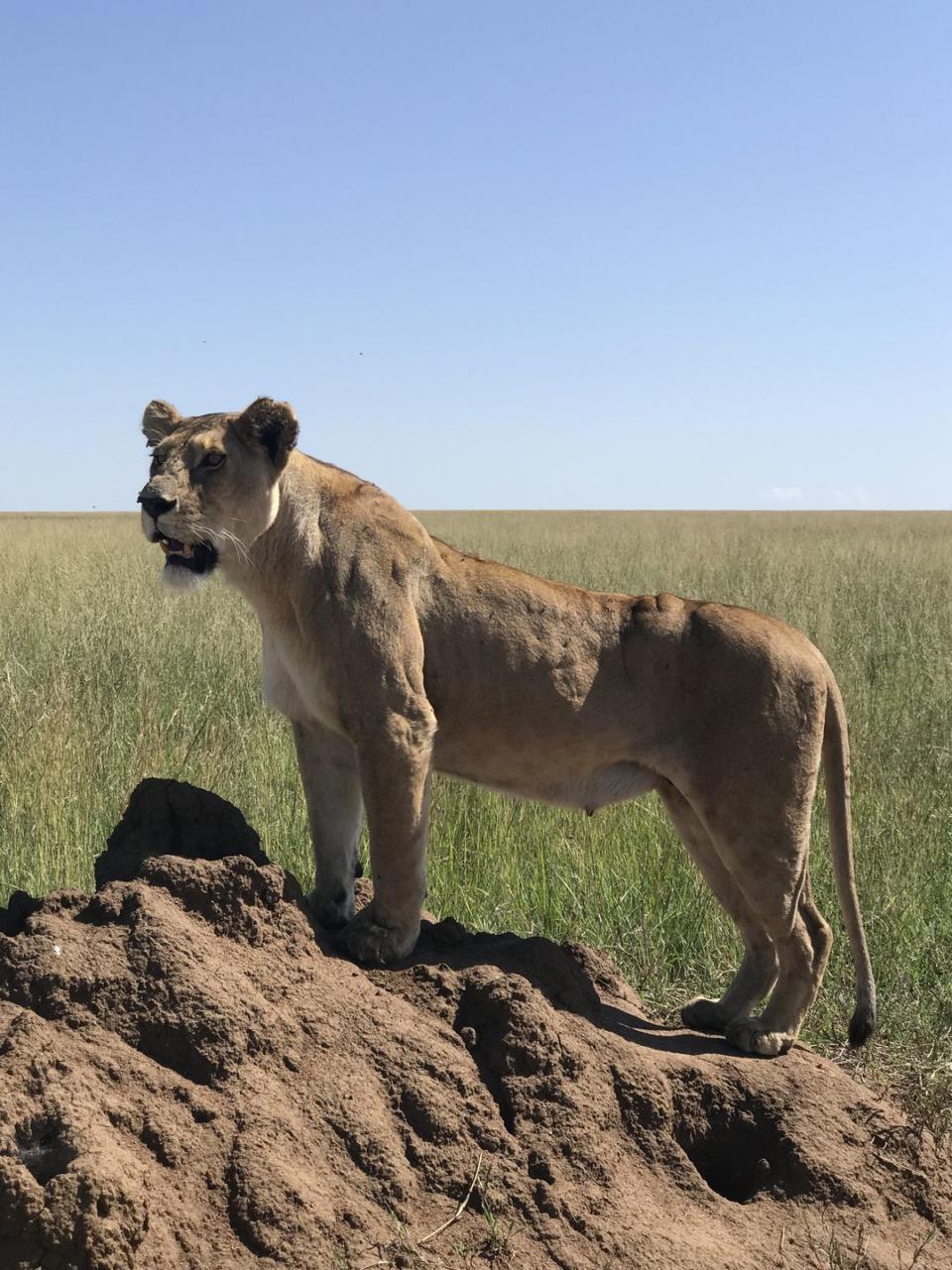
We head back to the lodge. There’s a bush dinner at sunset, out on the plain; a group of Zaramo tribal dancers will perform. I have seen only a third of the Best of Africa, but my bucket list is shorter by three, and I feel, to my surprise, absolute contentment. All right, it’s bittersweet: There is no new Daily Program on my bed when I return to my room, and after we fly back to Kilimanjaro International tomorrow, the black jet, alas, will take off for South Africa without me. “Hear that?” asks Dubois, who is also waiting for a commercial flight home and hears the departing roar. “I love that plane.” No kidding.
This story appears in the November 2019 issue of Town & Country. SUBSCRIBE NOW
You Might Also Like

